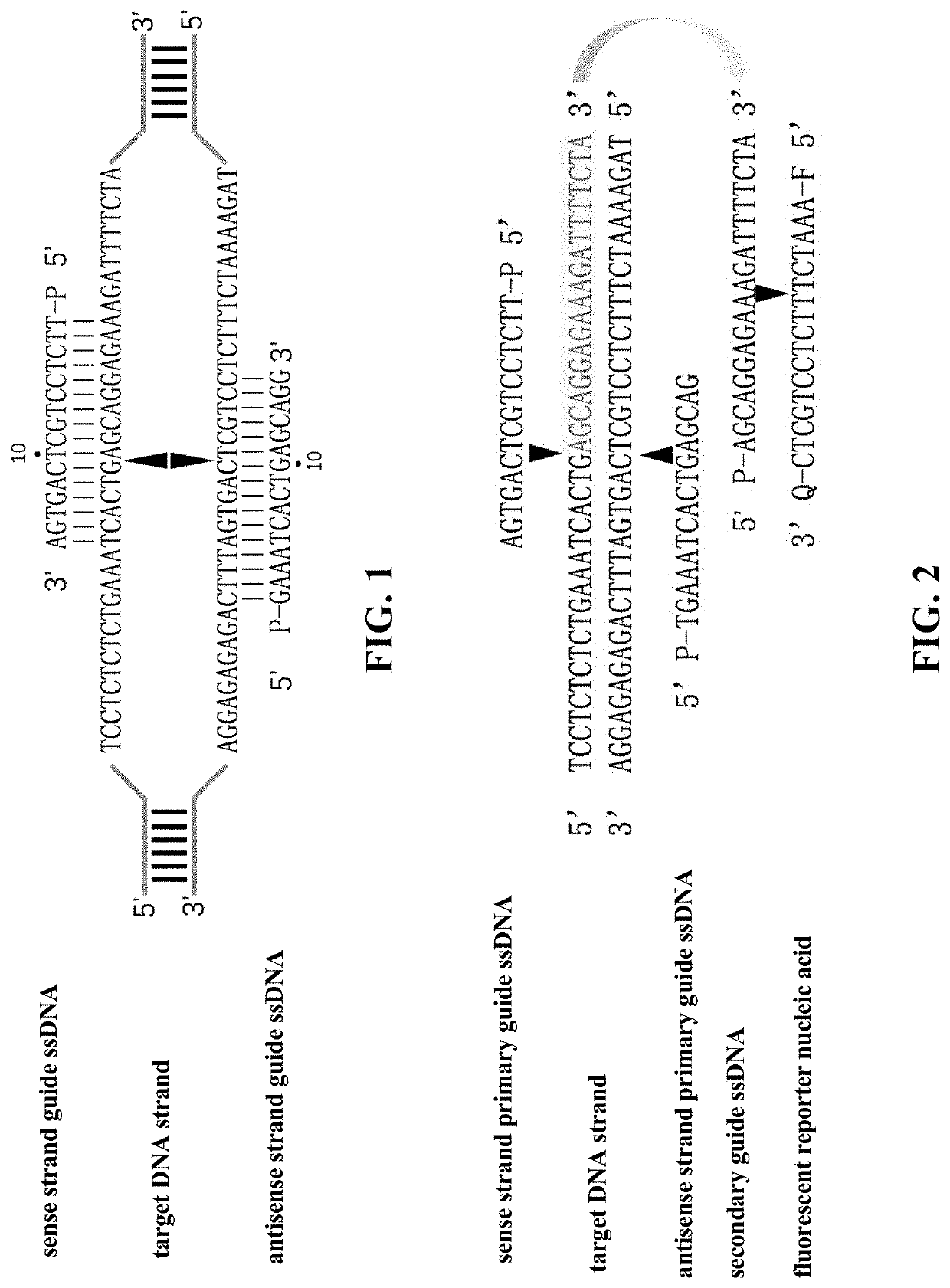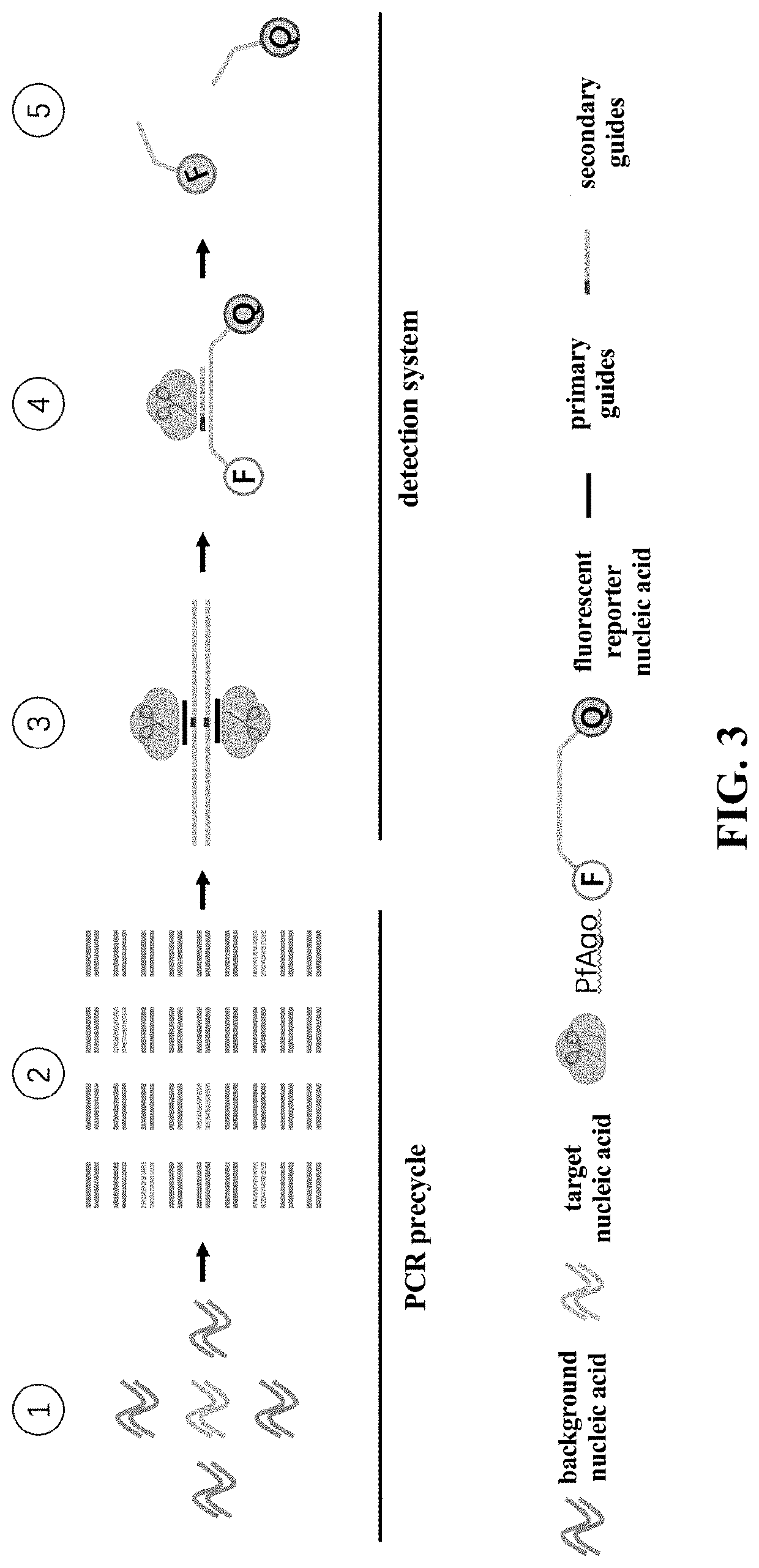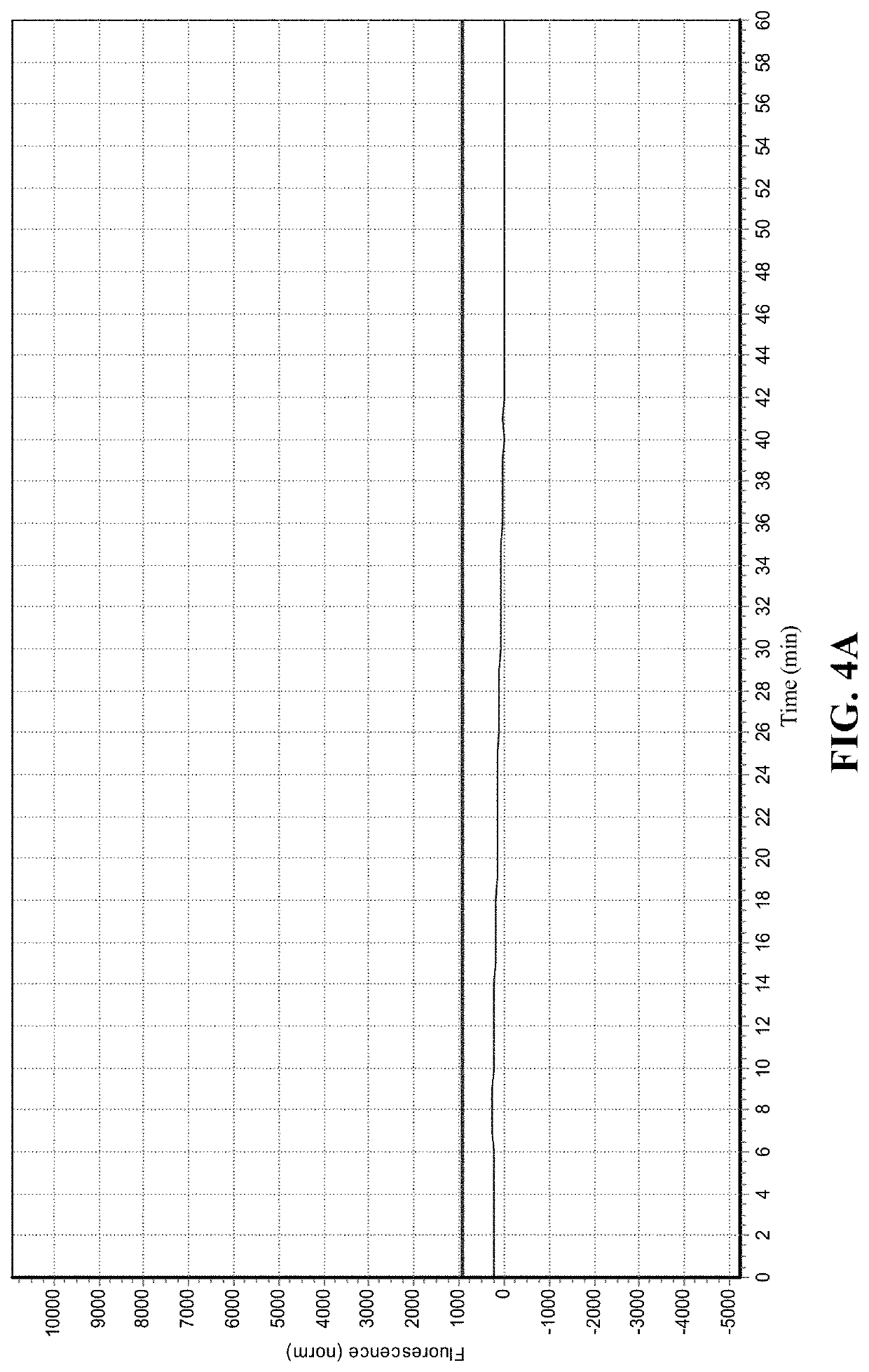Method for detecting nucleic acid based on prokaryotic argonaute protein and application thereof
a technology of prokaryotic argonaute and nucleic acid, applied in the field of biotechnology, can solve the problems of lack of satisfactory detection methods in the art, high cost and complexity of design principles, and inability to detect qpcr and high-throughput sequencing, and achieve high throughput to target dna, high sensitivity, and good specificity.
- Summary
- Abstract
- Description
- Claims
- Application Information
AI Technical Summary
Benefits of technology
Problems solved by technology
Method used
Image
Examples
example 1
[0154]Preparation of Detection Reagents and the Detection Method
[0155]In this example, it provides a kit used in the nucleic acid detection method of the present invention based on the gene editing enzyme Pyrococcus furiosus Argonaute (PfAgo) and the usage method thereof.
[0156]1.1 Detection Reagents and Kits
[0157]In this example, the detection of the E545K mutation of the PIK3CA gene was taken as an example, and the corresponding specific target nucleic acid sequence is
SEQ ID NO: 15′-CTGTGACTCCATAGAAAATCTTTCTCCTGCTCAGTGATTTCAGAGAGAGGATCTCGTGTAGAAATTGCTTTGAGCTGTTCTTTGTCATTTTCCCT-3′.
[0158]Based on the method of the present invention, the corresponding detection reagents include:
[0159](1) amplification primers F-primer and R-primer, wherein the specific sequences are as follows:
F-primer:(SEQ ID NO: 2)5′-CTGTGACTCCATAGAAAATCTTTCTCC-3′R-primer:(SEQ ID NO: 3)5′-AGGGAAAATGACAAAGAACAGCTC-3′
[0160](2) a specific guide ssDNA pair, comprising a sense strand guide ssDNA and an antisense strand g...
example 2
[0173]Detection of Different Concentrations of Nucleic Acids to be Tested
[0174]The specific target nucleic acids (SEQ ID NO: 1) was diluted according to the principle of 10-fold dilution method, into standard stock solutions of 200 pM, 20 pM, 2 pM, 200 fM, 20 fM, 2 fM and 0 fM. The nucleic acid standard stock solutions of different concentrations were added to the reaction system described in Example 1. The sample was added and the reaction was carried out according to the steps, and the fluorescent signal value at the wavelength of the corresponding fluorescent group was detected by fluorescent quantitative PCR.
[0175]The results are shown in FIGS. 4A-4H. Wherein, the concentrations of the target nucleic acids in FIGS. 4A, 4B, 4C, 4D, 4E, 4F, 4G were 0 fM, 2 fM, 20 fM, 200 fM, 2 pM, 20 pM, 200 pM, and FIG. 4H shows the result of the non-target nucleic acids (20 ng was added to the system).
[0176]The non-target nucleic acid was the total DNA extracted from normal human serum. The resu...
example 3
[0178]Specificity Test and Multiple Detection
[0179]Solutions of different types of target nucleic acids with a concentration of 200 pM were prepared, which were the two types of HCV viruses JFH-1 2a and CON1-1b, respectively.
[0180]It should be noted that the difference between these two types is that there are two consecutive positions different in the sequence.
[0181]Multiple mixed detection system was prepared. 2 pairs of specific amplification primers were added to the detection amplification system at the same time. And the target nucleic acids to be detected were added to the detection amplification system, according to the following 4 groups: (1) blank Control; (2) JFH-1 2a; (3) CON1-1b; (4) JFH-1 2a and CON1-1b. (FIG. 5 shows the specificity of the fluorescent reporter nucleic acids, which did not affect each other in one reaction system.)
[0182]After the amplification reaction was completed, PfAgo enzyme, MnCl2, 2 groups of specific ssDNAs, 2 pairs of fluorescent reporter nucl...
PUM
| Property | Measurement | Unit |
|---|---|---|
| Length | aaaaa | aaaaa |
| Molar ratio | aaaaa | aaaaa |
| Fluorescence | aaaaa | aaaaa |
Abstract
Description
Claims
Application Information
 Login to View More
Login to View More - R&D
- Intellectual Property
- Life Sciences
- Materials
- Tech Scout
- Unparalleled Data Quality
- Higher Quality Content
- 60% Fewer Hallucinations
Browse by: Latest US Patents, China's latest patents, Technical Efficacy Thesaurus, Application Domain, Technology Topic, Popular Technical Reports.
© 2025 PatSnap. All rights reserved.Legal|Privacy policy|Modern Slavery Act Transparency Statement|Sitemap|About US| Contact US: help@patsnap.com



